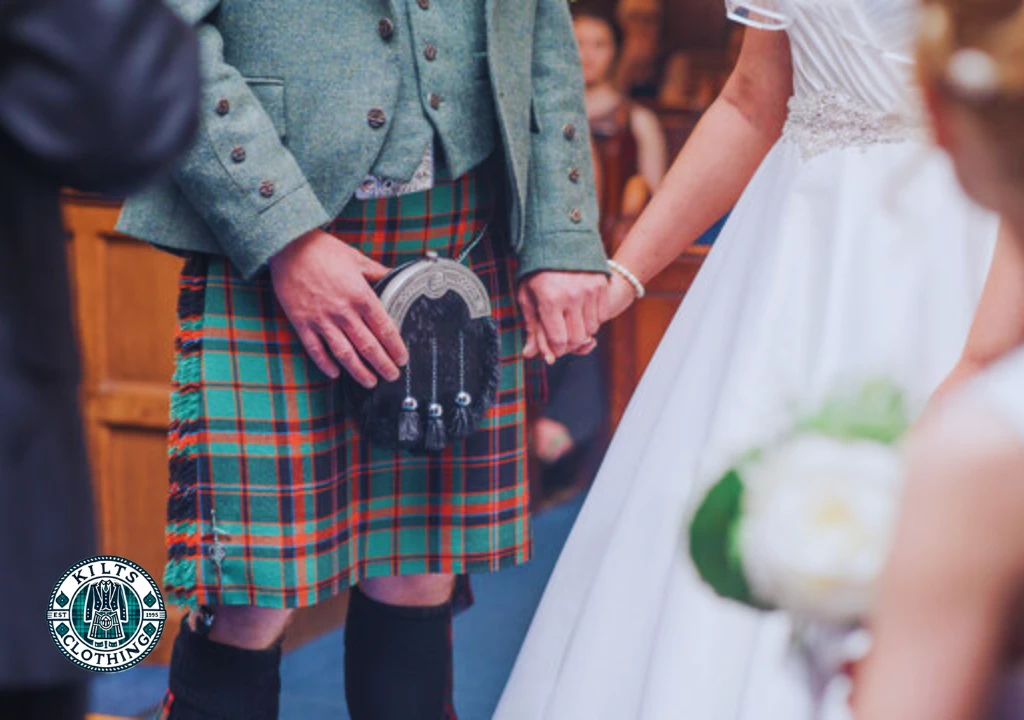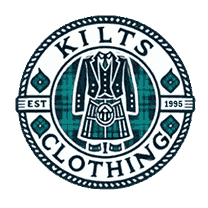Stunning Wedding Kilts: How to Select the Perfect Kilt for Your Big Day

When planning a wedding, every detail counts, especially the attire. For those with Scottish heritage or simply an appreciation for the timeless elegance of a traditional kilt, wedding kilts offer a stunning and culturally rich alternative to the standard suit or tuxedo. This guide will help you navigate the process of selecting the perfect kilt for your big day, ensuring you strike the right balance between tradition and personal style.
Understanding Wedding Kilts:
Wedding traditional kilt are more than just a garment; they celebrate Scottish culture and history. Traditionally, kilts have been a symbol of clan identity, with specific tartans representing different Scottish families. Today, wedding kilts have evolved to cater to traditional and contemporary tastes, offering a range of options from traditional Scottish kilts to modern bespoke kilts.
The Significance of Tartan in Wedding Kilts
One of the most important decisions in choosing a wedding kilt is selecting the right tartan. Tartan kilts are the most recognizable form of Scottish wedding attire, with each tartan pattern representing a specific Scottish clan. If you have Scottish roots, wearing your clan's tartan can be a meaningful way to honor your heritage. However, for those without a direct Scottish lineage, many beautiful universal tartans are available that can still add a touch of tradition to your wedding.
In addition to clan tartans, contemporary kilts feature modern designs, allowing you to tailor the kilt to fit your style or wedding theme. Whether you choose a traditional Scottish kilt with a classic tartan or a modern bespoke kilt with a unique design, your kilt will undoubtedly be a standout piece on your wedding day.
Choosing the Right Kilt for the Groom:
Selecting a groom kilt involves more than just picking a tartan. The fabric, fit, and additional accessories are crucial in achieving the perfect look.
Fabric Choices: Wool, Tweed, and Beyond
Most traditional kilts are made from wool, known for its durability and rich texture. Wool kilts are ideal for formal weddings and provide a classic, elegant look. For those seeking something different, tweed kilts offer a more rustic and earthy appearance, perfect for a more relaxed or outdoor wedding setting. If you want a contemporary touch, consider leather accents or silk linings, which add sophistication and luxury to your kilt.
Modern vs. Traditional Kilt Designs
The choice between a traditional Scottish kilt and a modern bespoke kilt and also in Irish traditional kilt depends largely on your wedding style and personal preference. Traditional Scottish kilts are steeped in history and are typically paired with formal accessories like sporrans, kilt belts and buckles, and Ghillie brogues. This classic look is perfect for those who want to embrace the full regalia of highland dress for weddings.
On the other hand, modern bespoke kilts allow for more customization. You can experiment with different fabrics, colors, and design elements, such as personalized embroidery or family crests. This approach is ideal for those who wish to infuse their wedding attire with a personal touch while still respecting the traditional roots of the kilt.
Accessorizing the Wedding Kilt
Accessories can elevate your wedding kilt's overall look, adding functionality and flair. Some key accessories to consider include:
- Sporrans: This traditional pouch is worn around the waist and is practical and decorative.
- Kilt Pins and Flashes: These small details add a touch of elegance and are essential for a well-put-together look.
- Kilt Belts and Buckles: These secure the kilt and contribute to the overall aesthetic.
- Ghillie Brogues: Traditional Scottish shoes complement the kilt, typically featuring laces that wrap around the ankles.
When selecting these accessories, consider the formality of your wedding and the overall theme. Formal kilt outfits typically require more elaborate accessories, while a more casual wedding might call for simpler, understated items.
Tartan Kilts for the Wedding Party and Guests
While the focus is often on the groom, the rest of the wedding party and guests can don kilts, creating a cohesive and culturally rich atmosphere. Tartan wedding kilts can be coordinated across the wedding party, with different roles wearing different tartans or even matching the groom's tartan.
Kilts for the Wedding Party
For the groomsmen, consider personalized traditional wedding kilt that reflect the wedding's color scheme or the groom's tartan. Bridesmaids can also participate in the theme by wearing sashes or shawls made from matching tartan fabric, creating a harmonious and visually striking wedding party.
Kilts for Wedding Guests
Encouraging guests to wear kilts can add a unique touch to your wedding, especially if many attendees have Scottish heritage. Kilts for wedding guests can vary in formality, from full highland dresses to more relaxed contemporary kilts, depending on the event's overall vibe.
Celtic Weddings:
Celtic weddings are rich in tradition and symbolism, with the kilt playing a central role. Whether planning a traditional Scottish ceremony or a modern interpretation, the kilt remains a powerful symbol of your heritage and personal style.
Incorporating Celtic Symbols
Beyond the kilt, incorporating other Celtic elements, such as family crests or clan tartans, into your wedding can deepen the connection to your heritage. This can be done through small details like personalized embroidery on the kilt or larger elements like a handfasting ceremony, where the couple's hands are bound with tartan cloth to symbolize their union.
Tips for Maintaining and Preserving Your Wedding Kilt
After the wedding, preserving your kilt is crucial to maintain its beauty and integrity. Cleaning and preservation tips include:
- Dry Cleaning: Always use a professional cleaner specializing in kilts to avoid damage to the fabric and structure.
- Storage Recommendations: To protect your kilt from dust and moths, store it in a cool, dry place, preferably in a garment bag.
- Advice on Repair and Alterations: If your kilt requires repairs or alterations, take it to a skilled tailor with experience in kilts to ensure it retains its original quality.
Conclusion
Choosing the perfect wedding kilt is more than just adhering to tradition—it's about making a personal statement that resonates with your heritage and style. Whether you opt for a traditional kilt steeped in history or a modern bespoke kilt tailored to your unique taste, your attire will undoubtedly add a stunning and memorable touch to your special day. The careful selection of tartans, fabrics, and accessories allows you to craft a look that not only honors your roots but also aligns with the overall theme and ambiance of your wedding.
Your wedding day is a celebration of love and commitment, and the right kilt can elevate this experience, creating lasting memories for you and your guests. By embracing the elegance of Scottish culture through your kilt, you ensure that your attire will be a cherished part of your wedding, reflecting both tradition and personal expression.
FAQs
The groom, groomsmen, and any guests with Scottish heritage or those who appreciate the tradition can wear a kilt at a wedding.
Kilts are worn at weddings to honor Scottish heritage, embrace tradition, and add a unique cultural touch to the ceremony.
Essential accessories include a sporran, kilt pins, flashes, kilt belt and buckle, and Ghillie brogues.
Yes, both the wedding party and guests can wear kilts, which adds to the cultural atmosphere and unity of the event.



